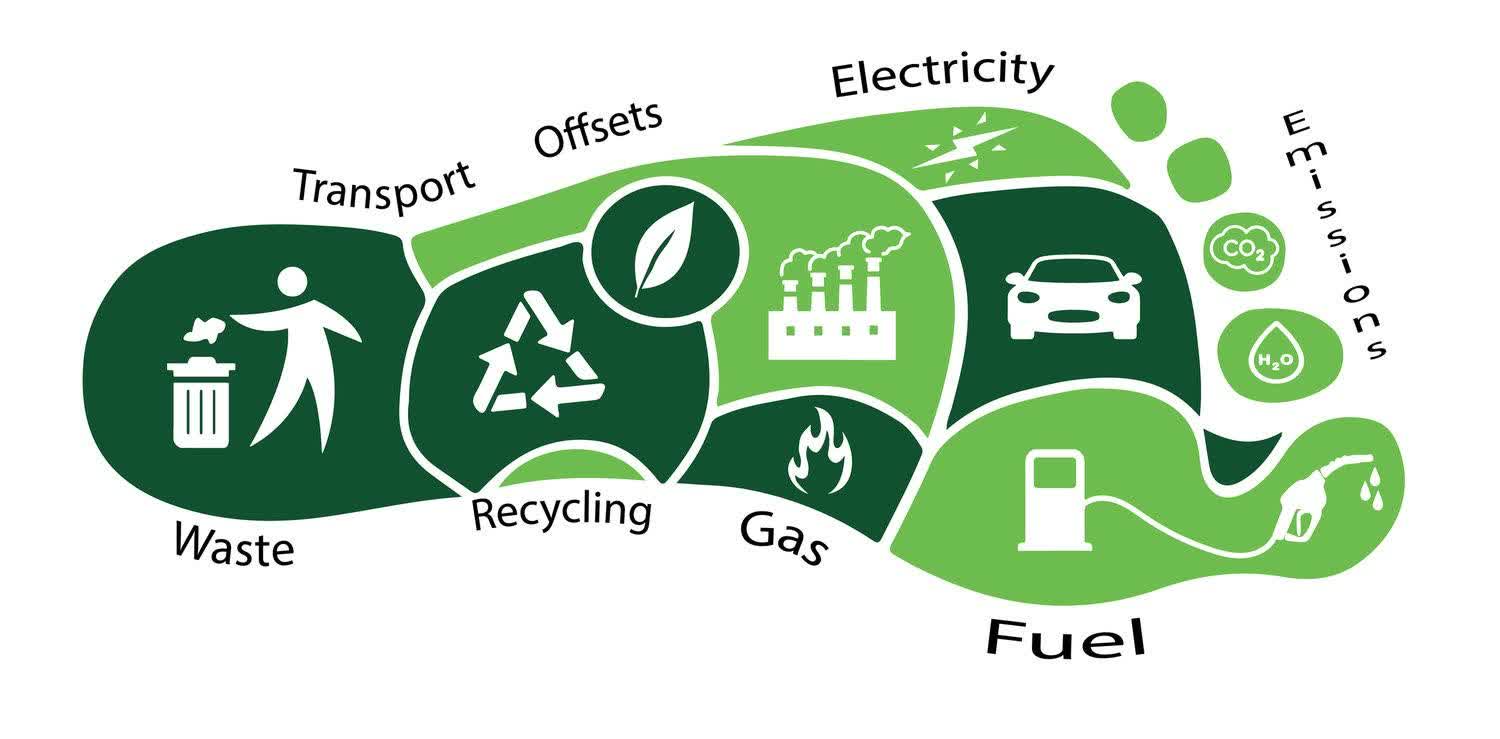
Exploring Carbon Footprint: Dispelling Myths

Table of Contents
Carbon Footprint: A Conceptual Insight
The celebration of Earth Day prompts discussions on crucial environmental concepts, with “carbon footprint” being one of the prominent terms. In this article learn the truth about carbon footprints as we debunk common myths and misconceptions. Learn how individual actions, industries, and technologies impact the environment and what you can do to reduce your carbon footprint effectively.
The Significance for Gen-Z
For Gen-Zers, the term “carbon footprint” has been a part of their vocabulary since an early age. It’s a concept that has been woven into school curricula and educational discussions, helping young people understand the environmental impact of their daily actions. Whether it’s the energy consumption of their homes, the transportation they use, or even the products they purchase, students are taught to recognize how each choice contributes to their overall carbon footprint.
As awareness of climate change grows, many Gen-Zers have become passionate about reducing their personal carbon footprints and encouraging others to do the same. From embracing sustainable practices like reducing waste and choosing eco-friendly products to advocating for cleaner energy solutions, this generation has been at the forefront of discussions surrounding environmental responsibility. This growing consciousness is leading to more sustainable behaviors, with Gen-Z eager to tackle climate challenges both individually and collectively.
Unraveling the Carbon Footprint
Calculating one’s carbon footprint is more than just a trend; it’s an eye-opening exercise that sheds light on the environmental ramifications of individual actions. While it seems like a simple solution to mitigate climate change, there’s more to it than meets the eye.
Exploring the concept of carbon footprints involves understanding common misconceptions and the broader implications of individual and corporate actions on climate change.
Myth 1: Individual Actions Are the Primary Drivers of Climate Change
While individual actions certainly play a role in greenhouse gas emissions, the overwhelming majority of carbon pollution is generated by industries and large-scale commercial enterprises. The production and consumption patterns of these sectors—particularly fossil fuel companies, manufacturing, and transportation—are the main drivers of climate change. This means that while individuals can make a difference through choices like reducing energy use or adopting sustainable practices, the scale of industrial emissions far exceeds what any individual can influence on their own.
According to the Intergovernmental Panel on Climate Change (IPCC), just 100 companies are responsible for a staggering 71% of climate-damaging carbon dioxide emissions worldwide. This highlights the critical importance of holding corporations accountable for their role in the climate crisis. Despite the focus on personal responsibility, real progress in reducing global carbon emissions requires systemic change, including regulatory measures that address the major polluters. This will ensure that large corporations are compelled to adopt cleaner technologies and shift toward sustainable practices, ultimately having a far greater impact than individual efforts alone.
Myth 2: Carbon Offsetting Fully Compensates for Emissions
Carbon offsetting involves purchasing credits to fund projects that reduce greenhouse gas emissions, such as renewable energy initiatives or tree planting. However, critics argue that calculating a precise carbon footprint is challenging and often inexact, and that offsets might not be as effective due to factors like impermanence (e.g., the potential destruction of planted forests). Additionally, there are concerns that carbon offsets may allow companies to continue polluting while appearing environmentally responsible, a practice known as greenwashing.
Myth 3: Electric Vehicles Are Worse for the Climate Than Gasoline Cars
lectric vehicles (EVs) generally have a smaller carbon footprint than gasoline-powered cars, even when factoring in the emissions from electricity generation used to charge them. EVs are inherently more energy-efficient since they convert a higher percentage of energy from the battery into motion, unlike internal combustion engines that waste much of the energy as heat. Additionally, EVs produce no tailpipe emissions, which significantly reduces their contribution to local air pollution compared to traditional gasoline vehicles.
However, the carbon pollution generated by EVs still depends largely on the energy sources used for charging. In regions where electricity is largely derived from coal or natural gas, the overall carbon footprint of EVs can still be considerable, as these energy sources emit significant amounts of carbon dioxide. On the other hand, when EVs are charged using renewable energy sources like wind, solar, or hydroelectric power, their environmental impact is dramatically reduced, making them a far cleaner transportation option. This underscores the importance of transitioning to green energy solutions alongside the adoption of electric vehicles to fully maximize their potential in reducing carbon emissions.
Myth 4: Carbon Dioxide Can’t Be Responsible for Climate Change Because Plants Need CO₂
While plants rely on carbon dioxide (CO₂) for photosynthesis and survival, there is a finite amount of CO₂ they can absorb. This natural process of carbon sequestration is crucial for maintaining the balance of greenhouse gases in the atmosphere. However, as deforestation and land degradation continue at alarming rates, the planet’s capacity to absorb CO₂ through forests and other vegetation diminishes. The loss of forests means fewer trees to absorb CO₂, exacerbating the problem of excessive carbon in the atmosphere and accelerating climate change.
The real issue isn’t the nature of CO₂ itself, but rather the overwhelming quantity of it that human activities are releasing into the atmosphere. Industrial processes, fossil fuel consumption, and agriculture are major contributors to the growing levels of CO₂, far exceeding what plants can naturally absorb. This imbalance disrupts the Earth’s carbon cycle, leading to higher concentrations of greenhouse gases that trap heat in the atmosphere, causing global warming. The current scale of emissions is unsustainable, and without significant action to reduce them, we risk pushing the planet’s systems beyond their natural limits.
Myth 5: Biofuels Emit the Same Amount or More Greenhouse Gases Than Gasoline
Biofuels are considered a cleaner alternative to gasoline because they produce fewer greenhouse gas emissions during combustion. Unlike traditional fossil fuels, biofuels are made from renewable organic materials, such as plants and algae, which can absorb CO₂ while growing, offsetting some of the emissions when burned. Moreover, biofuels are fully biodegradable, meaning they pose less environmental risk in case of spills compared to petroleum-based fuels, which can have long-lasting harmful effects on ecosystems.
Cellulosic ethanol, a type of biofuel derived from plant fibers like wood, grasses, and agricultural waste, is particularly promising. It has the potential to reduce greenhouse gas emissions by up to 86% compared to gasoline, making it a much more sustainable option. This significant reduction in emissions can help mitigate climate change by lowering the overall carbon footprint of the transportation sector. As technology advances and production methods improve, biofuels like cellulosic ethanol could play a key role in reducing global dependence on fossil fuels and supporting a cleaner, more sustainable energy future.
Myth 6: Carbon Neutrality Targets Are Always Ambitious and Effective
Carbon neutrality targets, often hailed as a key step toward mitigating climate change, are frequently less ambitious than they appear. Many companies and governments set these targets without fully addressing the root causes of their emissions, relying heavily on carbon offsets or unproven technologies to meet their goals. Carbon offsets typically involve funding projects like tree planting or renewable energy initiatives in distant regions, which may not always result in meaningful reductions in actual emissions. Furthermore, some proposed technologies for capturing or removing carbon from the atmosphere remain untested or are not scalable, making it unclear whether they can deliver on the promises made.
This reliance on carbon offsets and unproven solutions often shifts the focus from real, actionable change to public relations efforts designed to enhance an organization’s image. Rather than drastically reducing emissions at the source, many carbon neutrality pledges are used to maintain the status quo while appearing environmentally responsible. As a result, these targets can sometimes be more about appearing green and attracting consumers rather than making a genuine and measurable environmental impact. For meaningful progress on climate change, it’s crucial to prioritize deep emissions reductions, rather than relying on temporary fixes or speculative technologies.
Myth 7: Carbon Footprints Are Solely About Carbon Dioxide Emissions
The concept of a carbon footprint primarily focuses on the emissions of greenhouse gases, particularly carbon dioxide, that contribute to climate change. However, it only represents one aspect of a much larger environmental picture. While reducing carbon emissions is crucial for mitigating global warming, the carbon footprint does not take into account other significant environmental impacts, such as biodiversity loss, ecotoxicity, and habitat destruction. These factors are equally important when assessing the full ecological consequences of human activities.
For instance, deforestation for agriculture or urban development not only releases carbon into the atmosphere but also results in the loss of vital ecosystems and wildlife habitats. Similarly, the use of certain chemicals and pollutants in industrial processes can cause ecotoxicity, harming aquatic life and disrupting entire ecosystems. A comprehensive environmental footprint considers all these interconnected factors, acknowledging that the health of the planet is influenced by much more than just CO₂ emissions. In order to foster truly sustainable practices, we need to broaden our focus beyond carbon footprints and address the full range of environmental issues we face.
Myth 8: Food Miles Are the Most Important Factor in Food’s Carbon Footprint
While transportation is an important factor in a food’s overall carbon footprint, the energy used during production often plays a more significant role. For many foods, especially those grown in regions with colder climates, the energy required to produce them can contribute far more to their environmental impact than how far they are shipped. For example, tomatoes grown in heated greenhouses, which require a significant amount of energy for heating and lighting, can have a much higher carbon footprint than tomatoes that are grown in warmer climates and transported over long distances.
This is because the energy-intensive nature of production—such as the use of fossil fuels to power greenhouses or intensive farming practices—often outweighs the emissions from transportation. In some cases, foods that are locally grown but produced using non-renewable energy sources may be more environmentally damaging than those grown further away using more sustainable methods. Therefore, when evaluating the carbon footprint of food, it is essential to consider the entire supply chain, from production methods to transportation, to make a truly sustainable choice.
Myth 9: Data Storage Doesn’t Have a Significant Environmental Impact
A large portion of the data stored in the cloud is referred to as “dark data”—information that is collected, used once, and then forgotten or never revisited. This type of data contributes significantly to the energy consumption of data centers, as it requires continuous storage, maintenance, and backup. As a result, the environmental impact of data storage is often overlooked. The energy demands of maintaining vast quantities of dark data, including the cooling systems necessary to keep data centers functioning, add to the growing carbon footprint of cloud computing.
In fact, by 2030, it is estimated that data centers will account for nearly 6% of the United Kingdom’s total electricity use. This stark projection highlights the immense energy consumption associated with the rapid growth of cloud storage and digital services. As more businesses and consumers rely on the cloud for data storage, the need for energy-efficient technologies and sustainable practices in data centers becomes increasingly critical in addressing the environmental impact of the digital world.
Myth 10: Meat and Dairy Industries Are Not Major Contributors to Climate Change
Major environmental groups have, at times, collaborated with the meat and dairy industries in efforts to promote more sustainable practices. However, these partnerships often result in what is known as greenwashing—where companies appear to be environmentally responsible without making substantial changes to reduce their actual environmental impact.
While these alliances may help improve the public image of corporations, they frequently fail to address the core environmental issues tied to industrial meat and dairy production, such as deforestation, methane emissions, and excessive water usage.
In many cases, these partnerships create a false sense of progress, masking the need for deeper systemic changes within the meat and dairy industries. Rather than making meaningful strides in sustainability, some companies merely adopt minor changes or marketing strategies designed to appease public concern. This superficial approach can undermine genuine environmental efforts, as it diverts attention from the urgent need for a transformation in food production systems that could lead to significant reductions in environmental footprints.
Understanding these myths is crucial for developing effective strategies to mitigate climate change and promote sustainable practices.
Recent Insights on Carbon Footprints and Environmental Impact
Recent insights into carbon footprints and their environmental impact have highlighted the need for a more comprehensive approach to sustainability. While much focus has been placed on individual actions—such as reducing energy consumption or using more eco-friendly transportation—new studies reveal that a significant portion of global emissions stems from large-scale industries and corporations. In fact, a report from the Intergovernmental Panel on Climate Change (IPCC) shows that just 100 companies are responsible for more than 70% of global greenhouse gas emissions. This finding underscores the importance of addressing corporate emissions through regulatory measures, which could have a far-reaching impact on reducing the overall environmental footprint, especially when compared to the more limited effect of individual consumer choices.
Moreover, research has emphasized that carbon footprints are just one component of a broader environmental footprint. While reducing CO2 emissions is crucial in the fight against climate change, factors such as biodiversity loss, water use, and habitat destruction also play key roles in the health of our planet. Industries like agriculture, forestry, and manufacturing not only contribute to carbon emissions but also lead to habitat destruction, soil degradation, and water pollution. Moving forward, experts argue for a more holistic approach to sustainability that encompasses all forms of environmental harm, advocating for a shift toward circular economies and sustainable business practices that address the full scope of environmental degradation rather than focusing solely on carbon emissions.







